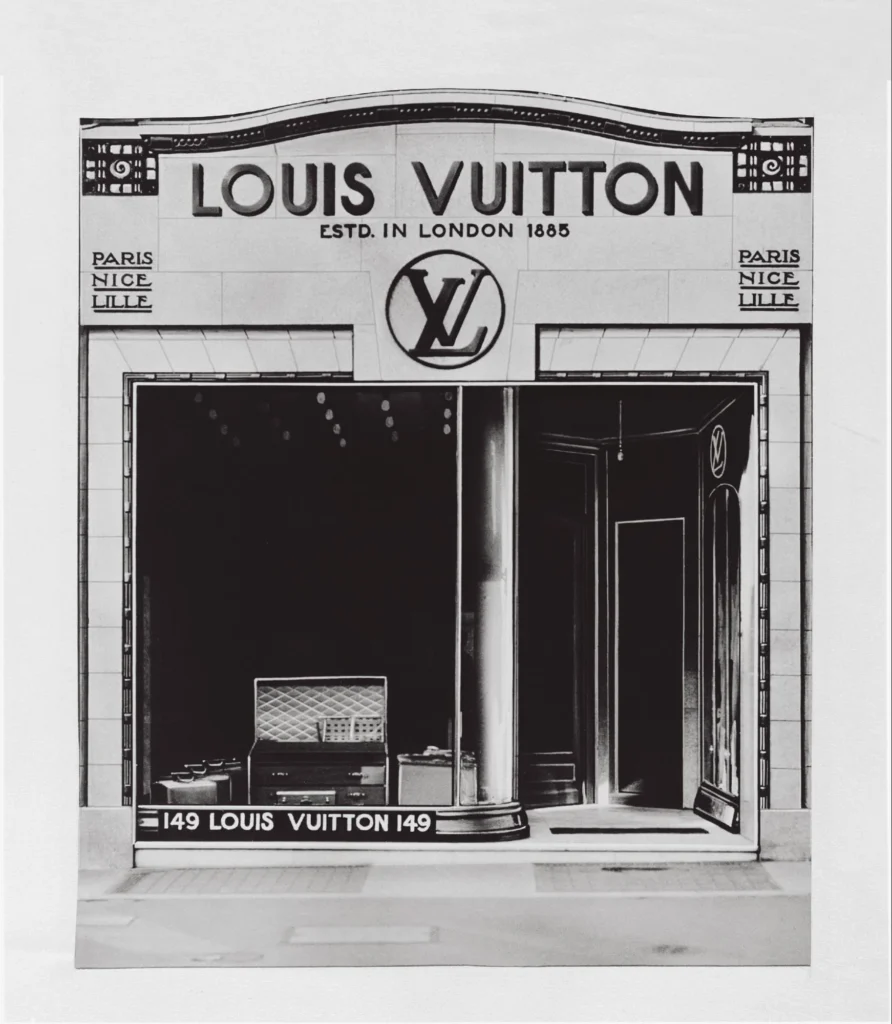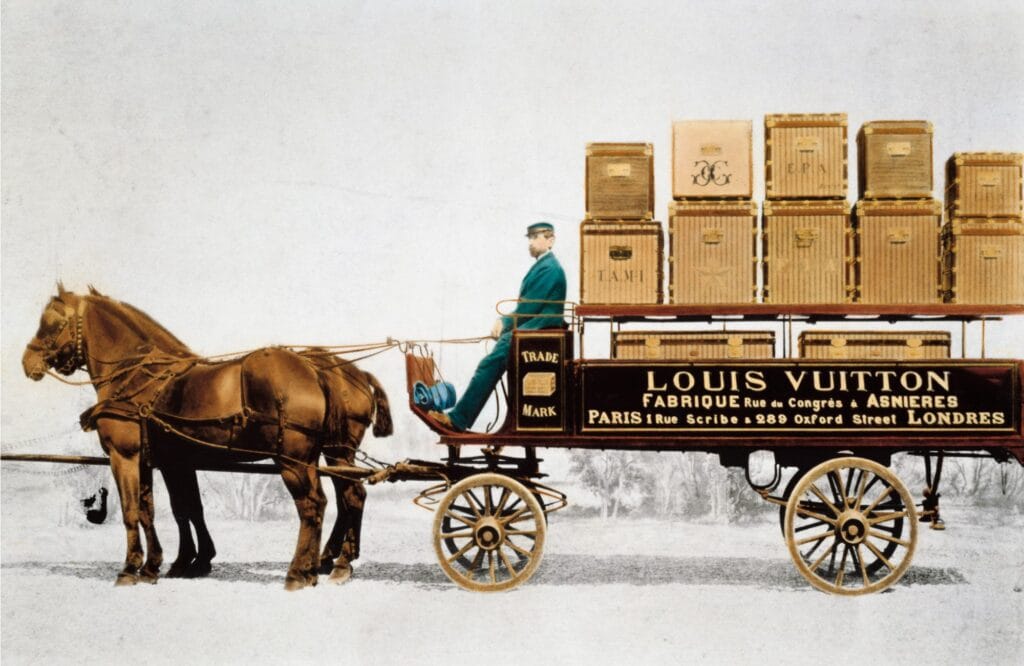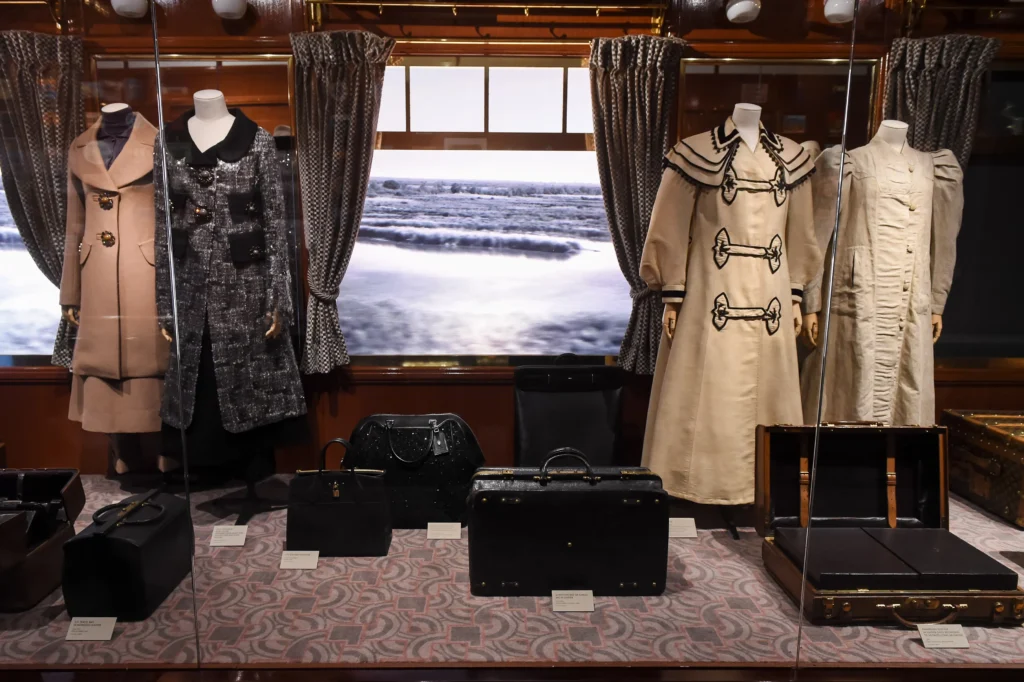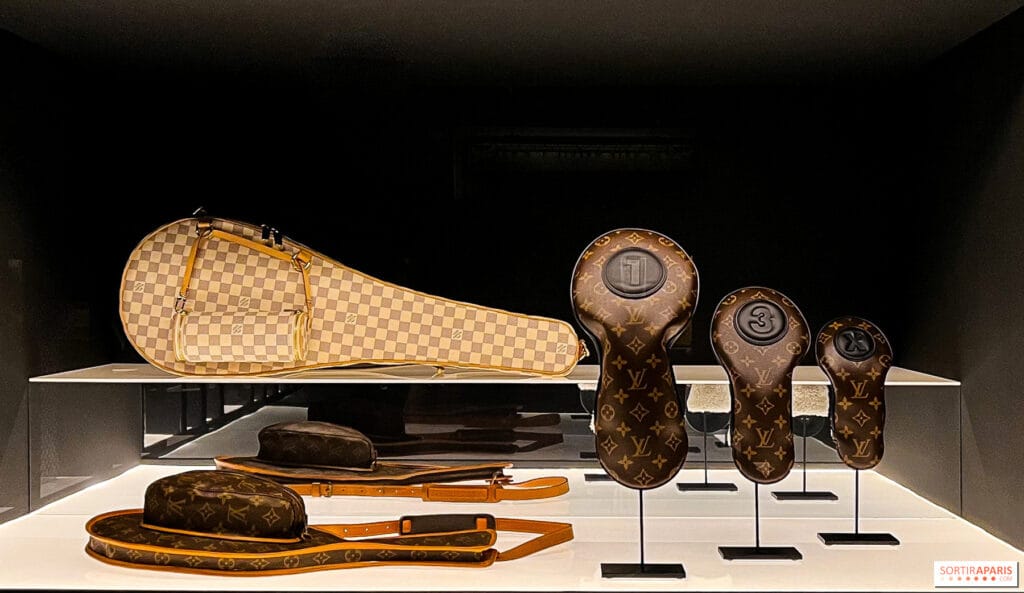Louis Vuitton, a name synonymous with luxury, sophistication, and timeless elegance, has a history as rich and intricate as the monogram that adorns its products. Founded in the mid-19th century, the brand has continually evolved, maintaining its status at the pinnacle of high fashion through a keen understanding of the balance between tradition and innovation. This article explores the fascinating history of Louis Vuitton, its perpetual reinvention through alternative fashion, and the iconic codes that have come to define it.

The Origins of Louis Vuitton: A Humble Beginning
Early Life and Training
Louis Vuitton was born on August 4, 1821, in Anchay, a small village in eastern France. At the age of 16, driven by an adventurous spirit and a desire for a better life, he set off on foot to Paris. The journey, which took over two years, marked the beginning of a remarkable career. In 1837, he apprenticed under Monsieur Maréchal, a well-known box-maker and packer in Paris. This apprenticeship provided Vuitton with invaluable skills and knowledge, laying the foundation for his future enterprise.
The Birth of the Brand
In 1854, Louis Vuitton opened his first shop on Rue Neuve des Capucines in Paris, establishing the brand that would become an epitome of luxury. The introduction of flat-topped trunks, a revolutionary design compared to the traditional dome-shaped trunks, allowed for easier stacking during travel. This innovation, along with the use of lightweight and durable materials, quickly garnered attention and set Louis Vuitton apart from its competitors.

Iconic Codes: The Foundation of Louis Vuitton’s Identity
The Monogram Canvas
Introduced in 1896 by Georges Vuitton, Louis’s son, the LV monogram canvas became one of the most recognizable patterns in the world. The design, featuring interlocking L and V initials, quatrefoils, and flowers, was not only aesthetically pleasing but also a strategic move to combat counterfeiting. The monogram has since become a symbol of luxury and exclusivity, continuously reinterpreted in various collections.
The Damier Canvas
Before the monogram, the Damier canvas, featuring a checkerboard pattern, was introduced in 1888. This design, credited to Louis Vuitton himself, was an early attempt to distinguish the brand from imitators. The Damier canvas has been revived in multiple iterations, including the Damier Ebène and Damier Azur, each exuding a distinct charm and versatility.
The Vachetta Leather
Vachetta leather, known for its natural, untreated finish, is another iconic element of Louis Vuitton products. Over time, this leather develops a unique patina, adding character and personalization to each piece. The use of Vachetta leather in handles and trims has become a hallmark of Louis Vuitton craftsmanship.




Evolution Through Alternative Fashion: Reinvention and Innovation
The Art of Travel: From Trunks to Modern Accessories
Louis Vuitton’s initial focus on travel goods laid the groundwork for its future expansions. The creation of innovative travel items, such as the Wardrobe Trunk and the Steamer Bag, showcased the brand’s ability to combine functionality with elegance. As travel evolved, so did Louis Vuitton, introducing products that catered to modern needs while maintaining the brand’s heritage.
Collaborations and Artistic Partnerships
One of the most significant aspects of Louis Vuitton’s evolution has been its collaborations with contemporary artists and designers. These partnerships have infused the brand with a fresh perspective, blending traditional craftsmanship with avant-garde creativity.
Stephen Sprouse
In 2001, Marc Jacobs, then creative director of Louis Vuitton, collaborated with American artist Stephen Sprouse. The result was the iconic graffiti collection, which featured the LV monogram overlaid with Sprouse’s neon graffiti. This bold departure from tradition redefined luxury fashion, merging street art with high-end aesthetics.
Takashi Murakami
Another landmark collaboration was with Japanese artist Takashi Murakami in 2003. Murakami’s playful and vibrant designs, including the Multicolore Monogram and Cherry Blossom motifs, brought a sense of whimsy and modernity to the brand. These collections were instant hits, demonstrating Louis Vuitton’s ability to embrace alternative fashion while staying true to its iconic codes.
Yayoi Kusama
In 2012, Louis Vuitton teamed up with Yayoi Kusama, a renowned Japanese contemporary artist known for her obsession with polka dots. The collection featured Kusama’s signature dots on a range of Louis Vuitton products, creating a visually striking and artistically profound line that celebrated both the brand’s heritage and Kusama’s unique vision.




The Influence of Creative Directors
The role of creative directors in shaping Louis Vuitton’s direction cannot be overstated. Each brought a distinct vision, steering the brand through different eras while upholding its core values.
Marc Jacobs
Marc Jacobs, appointed in 1997, was instrumental in transforming Louis Vuitton into a fashion powerhouse. He introduced ready-to-wear collections, making the brand a key player in the fashion world. Jacobs’s tenure was marked by daring collaborations and a blend of classic elegance with contemporary flair.
Nicolas Ghesquière
Nicolas Ghesquière, who succeeded Jacobs in 2013, continued to push the boundaries of fashion. Known for his futuristic approach and innovative designs, Ghesquière reimagined Louis Vuitton’s iconic elements, infusing them with a modern twist. His ability to blend the brand’s heritage with cutting-edge fashion has ensured its continued relevance.
Virgil Abloh
In 2018, Virgil Abloh was appointed as the artistic director of Louis Vuitton’s menswear. As the first African American to hold this position, Abloh brought a fresh perspective to the brand. His background in streetwear and his understanding of contemporary culture allowed him to create collections that resonated with a younger audience. Abloh’s work exemplified the brand’s ability to adapt to changing times while maintaining its essence.



The Cultural Impact of Louis Vuitton: Beyond Fashion
A Symbol of Status and Luxury
Louis Vuitton’s products have long been associated with status and luxury. Owning a Louis Vuitton item is often seen as a mark of success and sophistication. The brand’s commitment to quality, craftsmanship, and innovation has solidified its position as a symbol of prestige.
Influence in Pop Culture
Louis Vuitton’s influence extends beyond the fashion industry into the realms of music, film, and art. Celebrities and artists frequently reference the brand in their work, further cementing its status as a cultural icon.
Music
The brand has been mentioned in countless songs, particularly in hip-hop, where it represents wealth and success. Artists like Kanye West, Jay-Z, and Rihanna have all name-dropped Louis Vuitton, showcasing its relevance in popular culture.
Film and Television
Louis Vuitton’s presence in film and television also underscores its cultural impact. Characters in movies and TV shows often sport Louis Vuitton accessories, reinforcing the brand’s association with luxury and style.
Philanthropy and Social Responsibility
Louis Vuitton is also committed to philanthropy and social responsibility. The brand has supported various charitable initiatives and projects aimed at improving education, health, and the arts. This commitment to giving back enhances its reputation and aligns with its values of excellence and innovation.





Louis Vuitton Today: Continuing the Legacy
Sustainability and Innovation
In recent years, Louis Vuitton has made significant strides towards sustainability. The brand has implemented measures to reduce its environmental impact, such as using eco-friendly materials and improving supply chain transparency. These efforts reflect Louis Vuitton’s dedication to innovation and responsibility.
Digital Transformation
Embracing digital transformation has been crucial for Louis Vuitton in the modern era. The brand has enhanced its online presence, offering a seamless shopping experience through its website and mobile apps. Virtual reality and augmented reality have also been integrated into the customer experience, allowing for interactive and immersive engagement with the brand.
Customization and Personalization
Louis Vuitton continues to offer customization and personalization options, allowing customers to create unique pieces that reflect their individual style. Services like hot stamping and made-to-order products ensure that each item is tailored to the customer’s preferences, adding a personal touch to the luxury experience.

A Unique Footprint
Louis Vuitton’s journey from a humble box-making workshop to a global fashion empire is a testament to its enduring legacy of craftsmanship, innovation, and elegance. Through its iconic codes and ever-changing approach to alternative fashion, the brand has remained at the forefront of the luxury industry. By embracing collaboration, creativity, and cultural relevance, Louis Vuitton continues to redefine what it means to be a leader in fashion. As the brand moves forward, it will undoubtedly continue to inspire and captivate, maintaining its status as an icon of style and sophistication.






